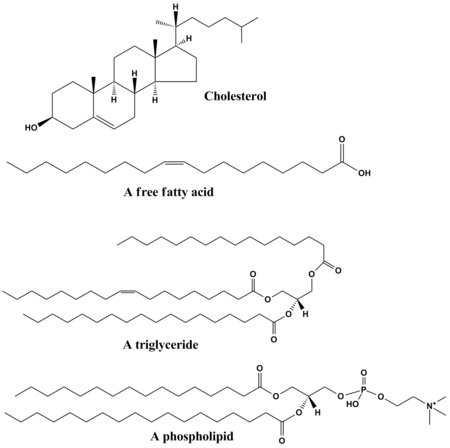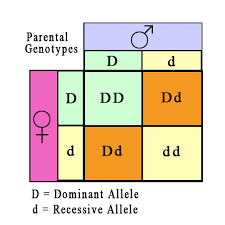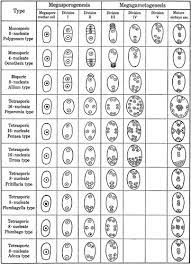Lipids-classification, function, identification
LIPIDS
Definition:
Lipids are diverse group of chemicals that are fats and oily
substances. Lipids are hydrophobic. These are insoluble in water. Lipids are in
soluble in organic solvents, such as Ether, Ethanol, Acetone, Chloroform,
Benzene, etc. Lipids contain Carbon, Hydrogen and Oxygen, as in Carbohydrates.
But in lipids the proportion of Oxygen is much less. Having only two Oxygen
atoms at one end of long molecule.
Classification of Lipids:
Simple Lipids:
Simple Lipids are esters of fatty acids with alcohols. Simple
Lipids can be sub-divided into: 1. Fats 2. Waxes.
Fats:
Esters of fatty acids with glycerol. Solid at room
temperature. Some are liquid at room temperature, and are known as oils. Physical
state depends upon the nature of fatty acids. Fats are rich in saturated fatty
acids. Oils are rich in unsaturated fatty acids.
Waxes:
They are esters of higher fatty acids with higher mono hydroxy aliphatic alcohols(e.g. Cetyl alcohol). Have very long straight chain of 60-100 carbon Atoms. They can take up water without getting dissolved in it. Used as bases for the preparation of cosmetics, ointments, polishes, lubricants and candles. In nature, they are found on the surface of plants and insects.
Fatty acids :
Fatty acids are carboxylic acids with hydrocarbon side
chain. The are the simplest form of lipids.
Occurrence of Fatty acid:
Majorly occur in esterified form as major constituents of
various lipids. They are also present as free (unesterified) fatty acids. Fatty
acids of animal origin are much more simpler in structure in contrast to those
of plant origin.
Classification of Fatty Acids:
Saturated Fatty Acids :
Contain only single C–C bonds. Closely packed. Strong
attractions between chains. High melting points. Solids at room temperature.
Unsaturated Fatty Acids :
Contain one or more double C=C bonds. Nonlinear chains do
not allow molecules to pack closely. Few interactions between chains. Low
melting points. Liquids at room temperature.
Examples of Saturated Fatty Acids:
2 Acetic acid
Ethanoic acid CH3COOH 4 Butyric acid Butanoic acid CH3(CH2)2COOH
6 Caproic acid Hexanoic acid CH3(CH2)4COOH
8 Caprylic acid Octanoic acid CH3(CH2)6COOH
10 Capric acid Decanoic acid CH3(CH2)8COOH
12 Lauric acid Dodecanoic acid CH3(CH2)10COOH
14 Myristic acid Tetradecanoic acid CH3(CH2)12COOH.
Examples of Unsaturated Fatty Acids:
Palmitoleic Acid CH3(CH2)5CH=CH(CH2)7COOH
Sardine Oil Oleic Acid CH3(CH2)7CH=CH(CH2)7COOH
Olive Oil, Peanut Oil, Linseed Oil Linoleic Acid
CH3(CH2)4CH=CHCH2CH=CH(CH2)7COOH
Olive Oil, Peanut Oil, Linseed Oil, Soybean Oil ϒ-linolenic
Acid CH3(CH2)4CH=CHCH2CH=CHCH2CH=CH(CH2)4COOH
Linseed Oil Erucic Acid CH3(CH2)7CH=CH(CH2)11COOH
Rapeseed Oil Arachidonic Acid
CH3(CH2)4CH=CHCH2CH=CHCH2CH=CHCH2CH=CH(CH2)3COOH
Peanut Oil Parinaric Acid CH3CH2CH=CHCH=CHCH=CH(CH2)7COOH
Plant lipids.
Triacylglycerols:
Storage of fatty acids in organisms is largely in the form
of TAG or fats. These substances are tri-esters of fatty acids and glycerol. Also
known as Neutral Fat and Triglyceride. Mono- and Diacylglycerol, wherein one or
two fatty acids are esterified with glycerol, are also found in the tissues. Naturally
occurring fats and oils are mixtures of triglycerides.
Function of Triglycerides (Fat):
Major lipid in the body and diet. Stored fat provides about
60% of the body’s resting energy needs – compactly. Insulation and protection. Carrier
of fat-soluble compounds. Sensory qualities – flavor and texture.
Complex Lipids:
Contain some non-lipid substances in addition to fatty acids
and alcohol. Non-lipids include proteins, carbohydrates, phosphate, sulphate,
nitrogen etc.
Classification Of Complex Lipids:
Phospholipids:
Made up of fatty acids, an alcohol, phosphoric acid and a
nitrogenous base. Some examples are lecithin, cephalin and sphingomyelin.
Functions :
- Component of cell membrane –both structural and regulatory functions.
- Phospholipids in mitochondria–lecithin, cephalin and cardiolipin–maintain ETC.
- Absorption of fat.
- Transport of lipids.
- Arachidonic acid –serves as a precursor of various eicosanoids.
- Cephalin–Blood clotting.
Glycolipids:
Made up of a fatty acid, an alcohol and some carbohydrates.
Cerebrosides:
Cerebrosides are made up of: 1. A fatty acid 2. Sphingosine
(an amino alcohol) 3. A carbohydrate (galactose).
Gangliosides:
Gangliosides are made
up of: 1. A fatty acid 2. Sphingosine 3. N-acetyl-neuraminic acid 4. Some
hexoses.
Lipoproteins:
May be considered to be conjugated proteins or compound
lipids. Made up of some lipids combined with some specific proteins. Lipids
includes triglycerides, phospholipids, cholesterol and fatty acids. These are
soluble in water because of their protein content. These are the form in which
lipids are transported in circulation.
Derived Lipids:
These compounds which obtained on hydrolysis of simple and
compound lipids. Possessing properties of lipids. Examples are fatty acids,
higher alcohols, sterols, steroids, hydrocarbons etc.
Steroids:
Steroids are lipids containing a steroid nucleus (core
structure). The steroid nucleus is a fused ring system consisting of three
cyclohexane rings and one cyclopentane ring. The rings are designated A, B, C
and D. Attachment of different groups to the core steroid structure leads to a
wide variety of steroid compounds, including cholesterol, bile salts and
steroid hormones. They are involved with regulating metabolic processes/activities
in the body because many forms of them are Hormones. Testosterone, Estrogen,
and progesterone are all examples of Steroid Hormones. Cholesterol is the most
common Steroid. It is the building block for other Steroid Hormones and also
function in cell membrane structure.
Identification of lipids:
Hydrolysis:
The ester bonds of lipids can be hydrolysed by specific
enzymes.
Saponification:
Hydrolysis of triglycerides by alkalis is known as
saponification. It results in the formation of alkali salts of fatty acids
(soaps).
Hydrogenation:
Double bonds of unsaturated fatty acids can be hydrogenated
in the presence of catalysts e.g. nickel.
Iodination:
Iodine can also reduce the double bonds of unsaturated fatty
acids.
Oxidation:
Unsaturated fatty acids can react with atmospheric oxygen to
form: Fatty acid peroxides ,Fatty acids
epoxides ,Fatty acid aldehydes.
Functions of Lipids:
- Storage form of energy.
- Important dietary components because of their high energy value and also because of the fat soluble vitamins and the essential fatty acids contained in the fat of natural foods.
- Structural components of cell membranes.
- Serve as thermal insulators in the subcutaneous tissues and around certain organs.
- Non-polar lipids act as electrical insulators, allowing rapid propagation of depolarization waves along myelinated nerves.
- Provide shape and contour to the body.
- Act as metabolic regulators.
- Combinations of lipid and protein (lipoproteins) are
important cellular constituents, occurring both in the cell membrane and in the
mitochondria, and serving also as the means of transporting lipids in the
blood.





Comments